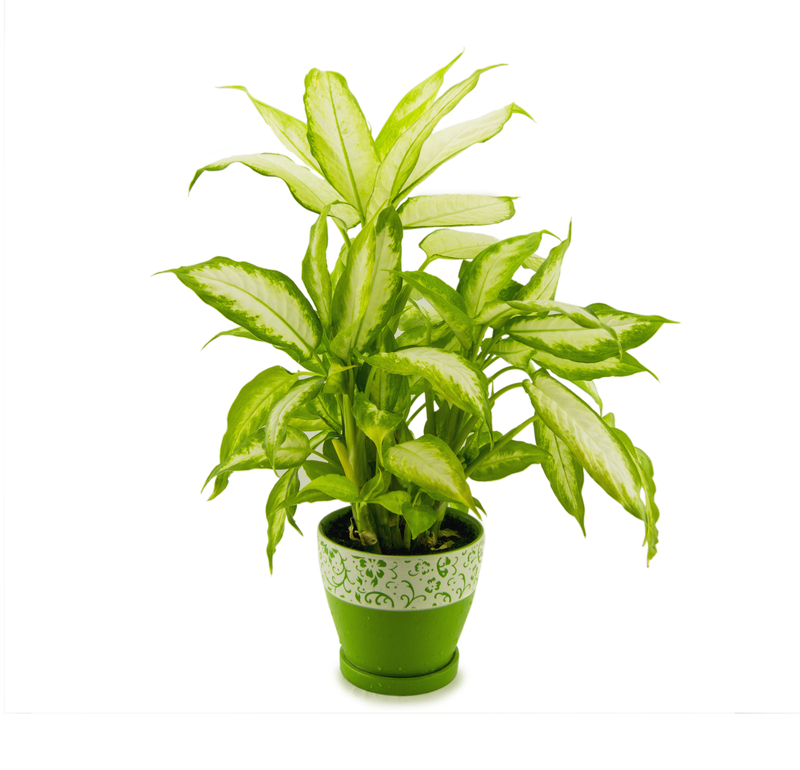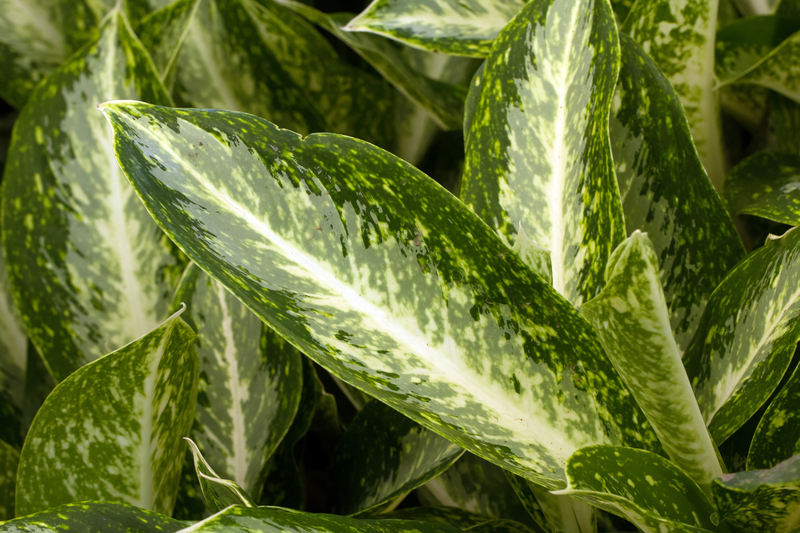Tips and Tools to Combat Summer Drought Lawn Damage
When summer arrives, the relentless sun and sporadic rainfall can turn lush, green lawns into dry, brown patches. Protecting your turf from summer drought lawn damage is crucial for the health of your landscape and the enjoyment of your outdoor space. In this comprehensive guide, we'll explore the most effective tips, clever solutions, and the best lawn care tools to help you combat drought conditions and keep your grass thriving.
Understanding Summer Drought and Its Impact on Lawns
A summer drought refers to prolonged periods without sufficient rainfall, often coupled with intense heat. While some turfgrass varieties are tolerant of challenging conditions, most homeowners notice symptoms of drought stress such as wilting, discoloration, dryness, and patchy or thinning areas. Let's examine how drought affects turfgrass and why it's essential to employ proper lawn drought mitigation techniques.
- Wilting and Browning: Grass blades may fold or curl and turn brown as they lose moisture faster than they can absorb it.
- Root Stress: Drought conditions force grass to divert energy to roots in search of water, which may hinder top growth.
- Increased Weed and Pest Pressure: Weakened turf is more susceptible to invasive weeds and opportunistic pests.
- Soil Compaction: Hardened, dry soil limits root spread and water infiltration.
Identify the Warning Signs of Drought Lawn Damage
Spotting the early indicators of drought is key for timely intervention. Watch for:
- Footprints remain visible on the grass for extended periods.
- Grass color turns bluish-gray rather than vibrant green.
- Blades appear curled or folded lengthwise.

Top Tips for Preventing and Repairing Drought-Damaged Lawns
Don't wait until your turf is in distress! These proactive and restorative tips will help you protect your lawn from even the most arid summer months:
1. Water Deeply, Not Frequently
Giving your lawn a deep soak a few times per week is far more effective than daily, shallow watering. Deep root systems are more resilient to water scarcity.
- Morning Watering: Water during the early hours (before 10 AM) to minimize evaporation and fungal risk.
- Aim for 1-1.5 Inches per Week: Measure with a rain gauge or a straight-sided can.
- Adjust for Soil Type: Sandy soils drain quickly and may need more frequent watering, while clay soils retain moisture longer.
Pro Tip: If you step on the lawn and footprints linger, your grass probably needs water!
2. Mow High and Often
Setting your mower to its highest recommended blade height shades the soil, keeping roots cooler and locking in moisture.
- Never Remove More Than One-Third: Cutting too short weakens grass and exposes it to sun scorch.
- Sharpen Your Blades: Dull mower blades tear the grass, causing extra stress during drought.
3. Mulch and Leave Grass Clippings
Grass clippings act as a natural mulch, conserving soil moisture and returning nutrients to your lawn.
- Leave Clippings: Mulching mowers finely chop clippings for easy decomposition.
- Compost Excess: Use surplus clippings in your compost to enrich garden beds.
4. Improve Soil with Aeration
Over time, soil compaction makes it harder for water to penetrate the root zone. Core aeration opens up spaces in the soil, allowing air, nutrients, and moisture to reach roots more effectively.
- Aerate in Early Fall or Spring: Avoid aerating during the peak of a drought, as it can exacerbate stress.
- Manual Aerators or Power Aerators: Choose the right tool depending on your lawn size.
5. Fertilize with Care
Summer drought is not the best time for heavy fertilizer applications. Excess nutrients may scorch your grass or promote shallow root growth.
- Use Slow-Release Fertilizer: Apply in late spring or early fall according to your turf type.
- Avoid High Nitrogen: Nitrogen-heavy fertilizers stimulate top growth, which increases water needs.
- Choose Drought-Tolerant Grass Varieties: If reseeding, select fescue, Bermuda, buffalo, or zoysia grass blends known for drought resistance.
6. Practice Spot Reseeding and Overseeding
Areas that have succumbed to drought stress can often be revived by reseeding thin or bare patches.
- Prep the Area: Rake to remove dead grass and loosen soil before spreading seed.
- Water Regularly: Keep soil moist until new grass establishes.
- Overseed in Early Fall: To create a denser, more drought-tolerant lawn.
Essential Lawn Care Tools for Drought Relief
Having the right tools makes all the difference in managing a drought-stricken lawn. Here are some essentials every homeowner should consider:
- Sprinkler Systems: Smart, programmable irrigation systems adjust timing based on weather conditions to conserve water.
- Rain Gauge: Accurately tracks rainfall so you won't overwater unnecessarily.
- Soil Moisture Meter: Handy for checking whether the root zone is adequately hydrated.
- Core Aerator: Whether manual or powered, this tool is vital for relieving compaction and improving moisture absorption.
- Mulching Lawn Mower: Efficiently processes clippings into natural mulch.
Advanced Strategies for Drought-Proofing Your Lawn
Utilize Water-Smart Landscaping
Water-wise landscaping, or xeriscaping, uses landscaping principles and drought-tolerant plants to minimize water use while maintaining aesthetic appeal. For lawn spaces, consider:
- Reducing Lawn Area: Replace underused grass with ground covers, gravel, or native plant beds.
- Drip Irrigation: Efficiently delivers water to the roots with minimal waste.
- Rain Barrels: Collect and reuse rainwater for hand-watering sensitive lawn areas during dry spells.
Apply Soil Amendments and Topdressing
Amending soil with organic matter improves water retention and grass health. Topdressing with compost or screened topsoil after aeration helps lawns bounce back quickly from summer drought.
- Compost: Increases microbial activity, enhances soil structure, and retains moisture.
- Gypsum: Useful for clay soils to improve drainage and water infiltration.
- Biochar: Stores water and nutrients for gradual plant uptake.
Choose Drought-Tolerant Grass Varieties
Transitioning your lawn to drought-resistant grasses protects against future dry spells. Cool-season lawns benefit from tall fescue blends, while warm-season lawns often succeed with Bermuda or Zoysia.
- Tall Fescue: Deep rooting and heat tolerance; suitable for cooler summer droughts.
- Bermudagrass: Thrives in hot, sunny regions; excellent for summer survival.
- Buffalograss: Native to U.S. prairies; needs minimal rainfall once established.
- Zoysia: Dense, slow-growing, and very efficient at water usage.
Repairing Drought-Damaged Lawns: Step-by-Step Guide
If drought has already taken its toll, follow these steps to revitalize your lawn:
- Assess the Damage: Distinguish between dead and dormant grass before investing in repairs.
- Water Deeply: Resume proper watering to awaken dormant turf.
- Aerate the Soil: Alleviate compaction and improve oxygen, water, and nutrient flow.
- Overseed Bare Patches: Apply an appropriate drought-tolerant seed blend.
- Topdress: Add a thin layer of compost to nourish new growth and improve soil structure.
- Maintain Proper Mowing: Set mower to max height and leave clippings until new grass is established.
- Monitor Progress: Water as needed and limit foot traffic until the lawn recovers.
Frequently Asked Questions About Summer Drought Lawn Damage
Can I revive a brown lawn after a drought?
If your grass is dormant (not dead), resuming regular deep watering and proper care will often restore green color within weeks. Severely damaged areas may need overseeding or patch repair.
How do I tell if my lawn is dead or dormant?
Dormant grass appears brown and dry but retains flexible, viable crowns just above the root zone. Dead grass, on the other hand, is brittle and pulls up from the soil easily with little resistance.
How long can a lawn survive without water?
Most turfgrasses can survive for 3-4 weeks without irrigation during dormant states. Extended drought beyond this period may cause permanent loss.
What should I avoid during summer drought?
- Avoid heavy fertilizer use.
- Don't mow during peak heat or immediately after watering.
- Limit foot traffic, especially if grass is brittle.
- Don't water in late evenings--this encourages fungal growth.

Sustainable Lawn Care During Drought: Eco-Friendly Practices
Being eco-conscious during a drought doesn't have to mean sacrificing curb appeal. Adopt these sustainable practices to save water and support soil health without harming your lawn:
- Natural Mulches: Apply a light layer of pine straw or shredded bark around the perimeter to slow evaporation.
- Integrated Pest Management (IPM): Address pest pressure using beneficial insects, minimal pesticides, and careful monitoring--drought-stressed turf is vulnerable.
- Smart Watering App: Utilize weather-based irrigation controllers to prevent overuse.
- Plant Diversity: Integrate native wildflowers or clover with your lawn to support pollinators and improve drought tolerance.
Final Thoughts: Winning the Battle Against Summer Drought Lawn Damage
Combating summer drought lawn damage requires a blend of smart lawn care strategies, the right equipment, and ecological awareness. By watering wisely, mowing thoughtfully, improving soil health, choosing drought-tolerant grasses, and employing modern lawn tools, you can protect your turf through even the hottest, driest months.
*Remember, a resilient lawn is built over time--be patient, consistent, and attentive to the needs of your unique landscape. Armed with these tips and tools, you'll be well on your way to enjoying a vibrant, healthy lawn all season long.*
Related search terms: lawn drought repair tips, prevent brown grass in summer, how to fix drought lawn spots, drought resistant grass seeds, best fertilization practices during drought, summer lawn rescue guide.